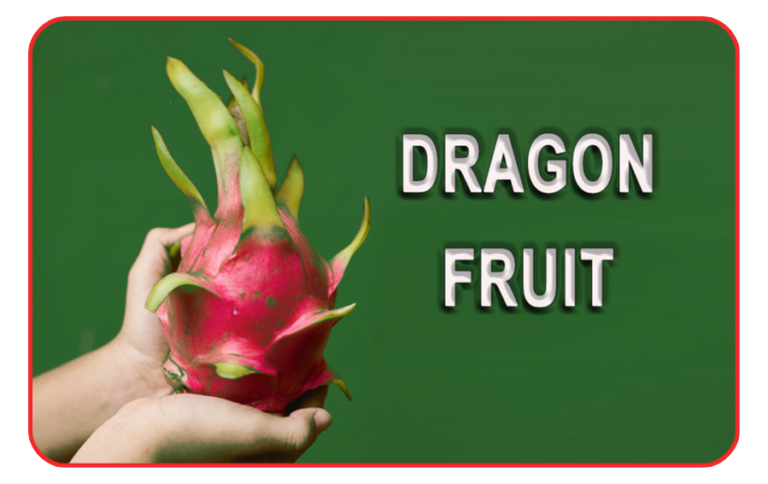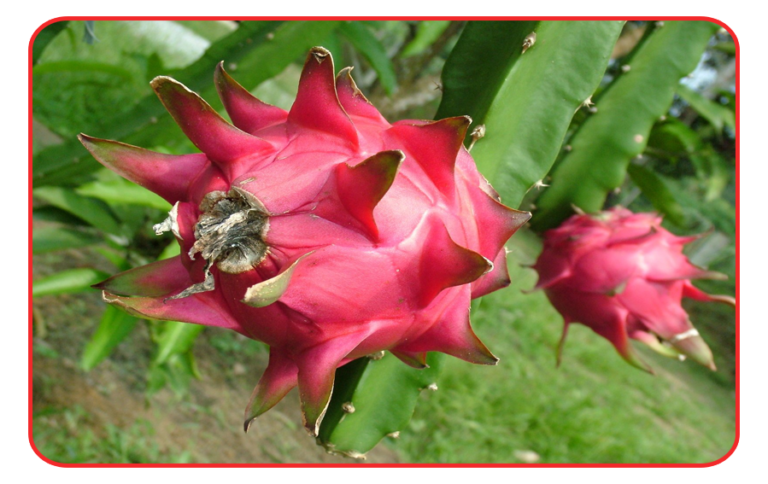
INTERESTING FACTS AND BENEFITS OF DRAGON FRUIT
The Dragon fruit has many names (official scientific name: Hylcereus spp). It can be called pitaya, strawberry pear, night-blooming cereus and in Thailand Gaew Mung Gorn, pronounced “gow mun gon”. This is where I was introduced to this amazing succulent.
The outer skin is a vivid red with strikingly beautiful, deep green colored scales. Once the easily removed skin is peeled off, you’re left with a white, red or yellow (depending on variety) colored ball which is deliciously edible. Placed in the refrigerator with skins and chilled will not only give them a longer, usable life, but with its ease of peeling and slicing, make it a delicious, refreshing snack. The juicy, soft texture has a melon like feel to the pallet and sliced, crushed or blended with other fruits makes the perfect smoothie, fruit salad or dessert.
For those of you living in the more temperate zones of the USA, you’ll find this fruit one of the most fun to grow, both for personal use or commercially. As a orchard farmer with often long term results coming after years of work and waiting, it was a joy to grow the fast growing succulents. The method works the same for both personal and commercial farmers. You should plan around having a 10′ in diameter circle. I know this sounds like a huge amount of space, but believe me when I tell you it’s necessary.
At the center of your 10′ diameter space, dig a hole a couple of feet deep. I used 8′ X 6″ concrete sewer pipe as my pole. The 6′ exposed pipe can have four individual Dragon fruit plants at the bottom of the pole. At the top of the pole, drill four evenly placed holes about a half inch in diameter. I used 3/8″ rebar cut in 24″ lengths to form a plus sign on top of pole. Wire together at the middle of the crossed rebar. The last step is to find some old motor scooter tires. Using more baling wire, attach one them on the top of your rebar.
If this sounds like over kill, it’s not. Dragon fruit plants will have massive root balls. The plant itself will grow a 2–3 inch climber which has fine roots that attach themselves to the concrete pole. When they reach the top of the pole (in a surprisingly short period of time) lay the climbers over the top of the tire. The climbers will now start to split and extend out three or four feet in every direction. The succulent climbers are heavy and in time will bend the steel rebar. A mature plant (4 on each pole) could produce a total of 100 pounds of fruit.

They stay green all year and make a dramatic appearance to your garden. As to why you need at least 10′ between plants, this is to allow the clearance between plants. Dragon fruit plants have teeth (sharp needles that will bite). Harvesting requires you to wear leather welding gloves to avoid being stuck. Having grown sweet lime and lemon trees, I know the dangers of harvesting without long leather gloves.
The healthy benefits of “gow mun gon” outweigh the disadvantages encountered while picking. Low calories and a host of nutrients that include Vitamin C, phosphorus, calcium, fiber and antioxidants. Considered a “superfood,” and known for its high nutrient content, with both antioxidant and anti-inflammatory properties. Recent research has indicated that eating this exotic red fruit may reduce the risk of cardiovascular disease, diabetes and cancer.